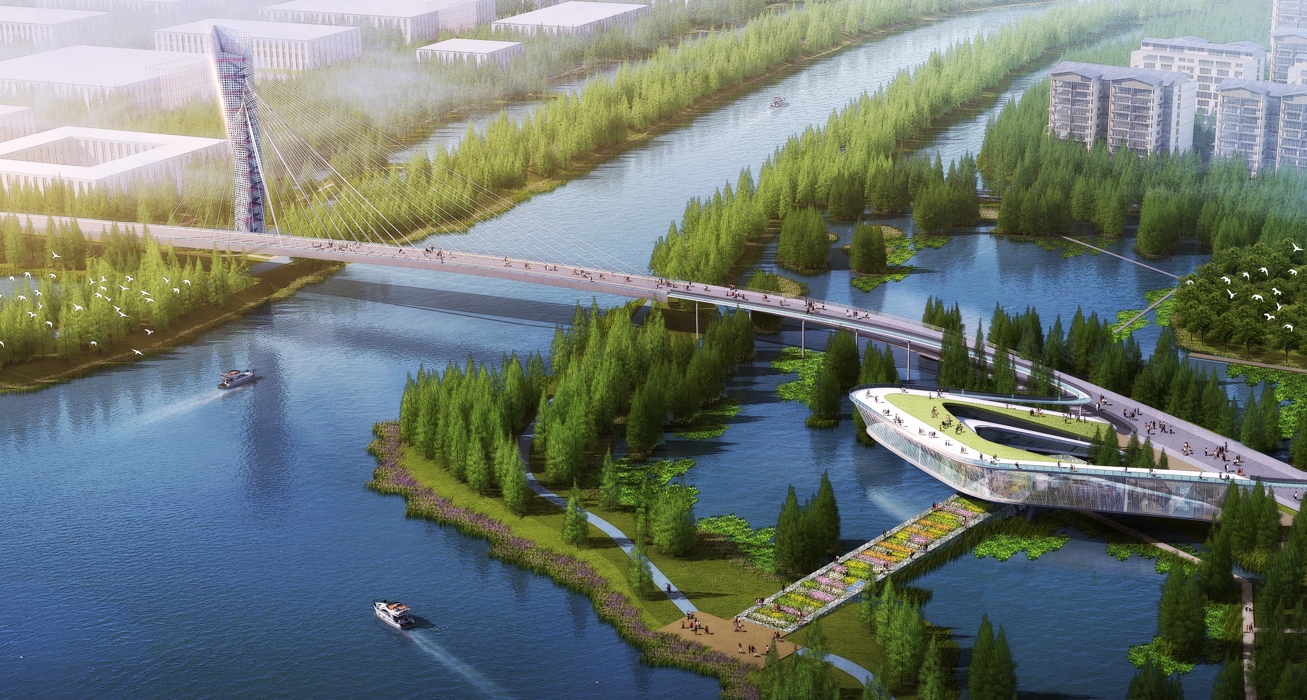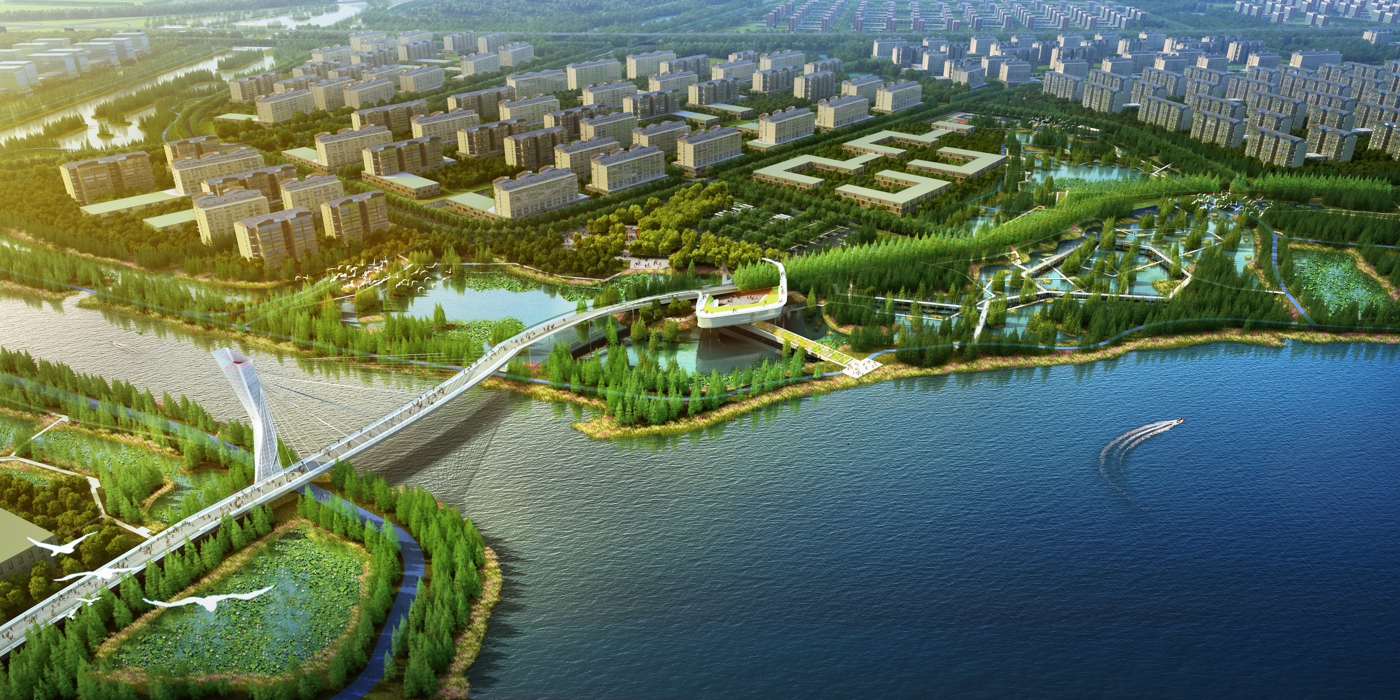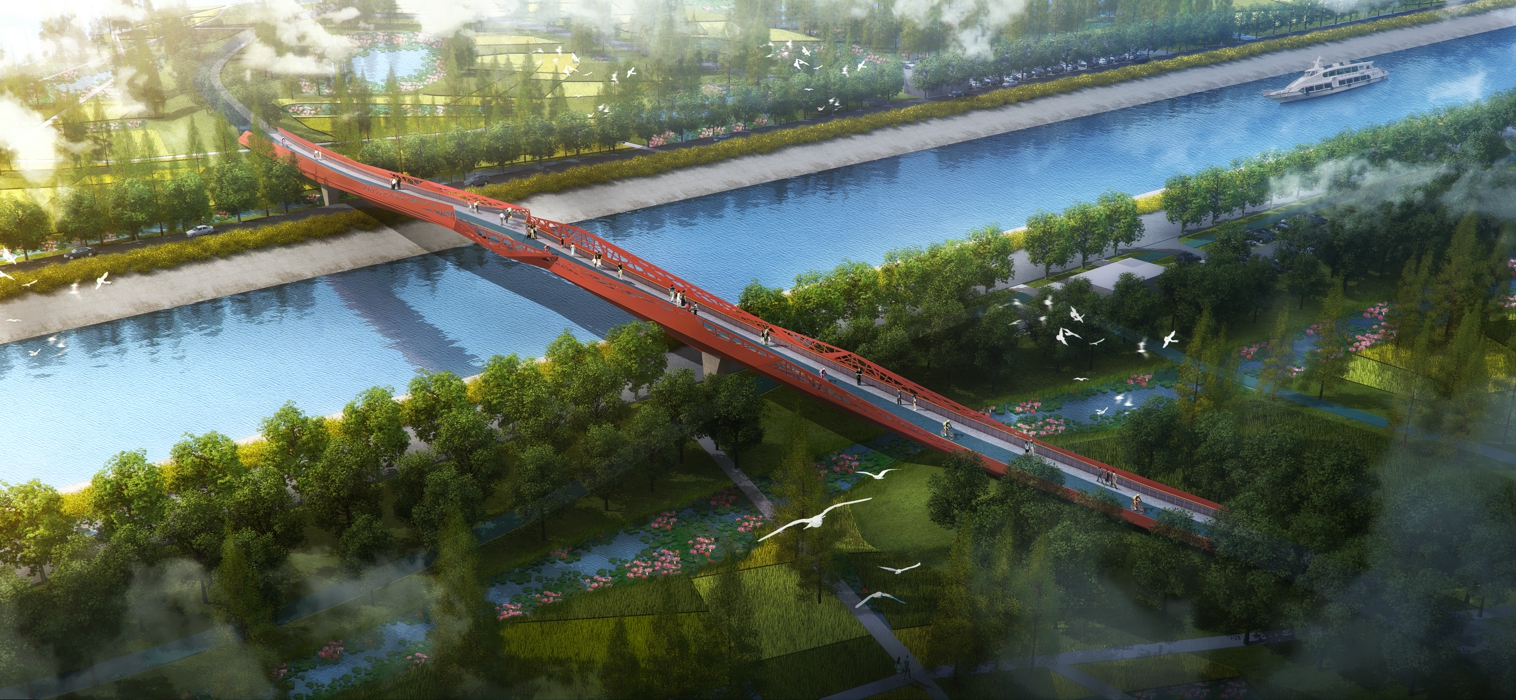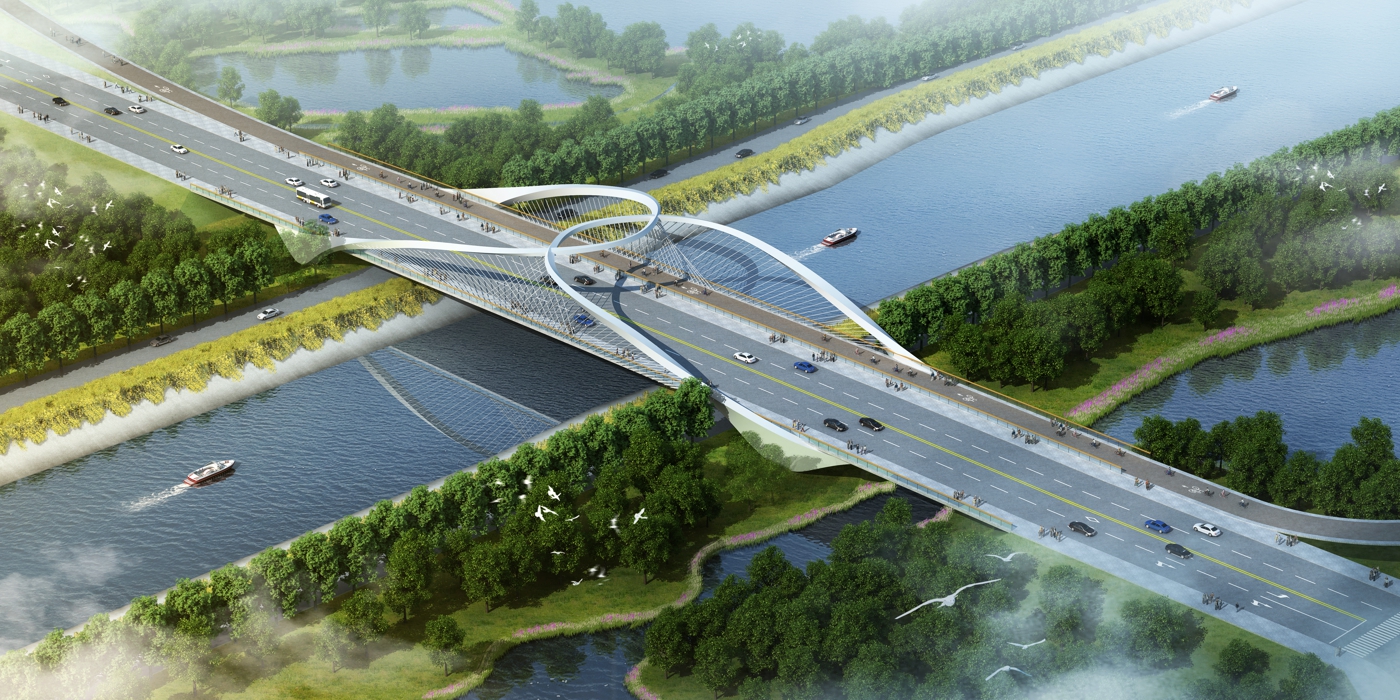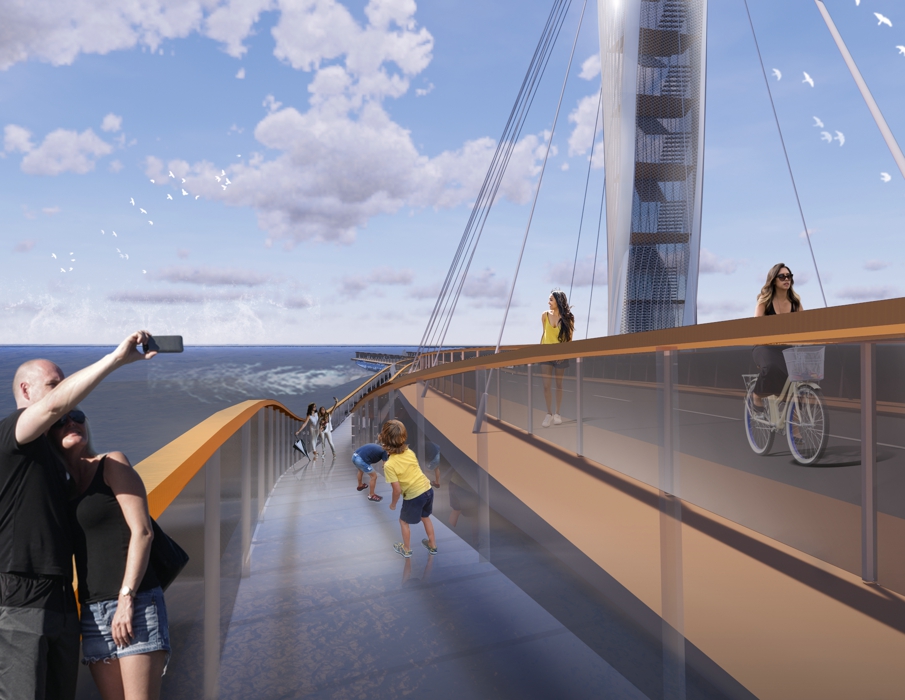Jingzhou Taihugang Bridge / Haihu Bridge
Project Information
- Project Location:
- China Jingzhou, Hubei
- Project Scale:
- Taihugang Bridge:653m / Haihu Bridge:659.4m
- Design Time:
- May 2019
Project Profile
The project is located in Jingzhou City, Hubei Province, spanning the river entrance of Haizihu. To improve the connectivity of the slow-traffic system surrounding Changhu Lake in the Jinan Cultural Tourism Zone, the project includes the construction of bridges across the Haizihu river mouth and the Yinjiang Jihan Canal.
The main loop road, bicycle lanes, and boardwalks together form a recreational network, allowing people to enjoy the natural scenery of lakes and hills in the land of Jingchu. The design respects the surrounding ancient city ruins and cultural heritage, exploring a balance between artificial construction and natural elements, and achieving harmonious coexistence between humans and nature.
This is a large-scale bridge project. Taihugang Bridge has a total length of 653 meters, with a cable-stayed structure and a maximum span of 150 meters. Hailu Bridge has a total length of 659.4 meters, adopting an inverted steel arch structure with a maximum span of 136 meters.
According to Hubei’s overarching goal of “ensuring clear waters flow through a thousand lakes,” Jingzhou prioritizes water ecology as a foundation for developing a modern fishery economy. The design reflects the beautiful scenery of Jingchu and the cultural concept of fisheries, rooting the bridge in local identity. Taihugang Bridge draws inspiration from the dynamic motion of a fisherman casting a net, symbolizing the vitality of Jingchu culture in the modern era. Hailu Bridge extracts elements from fishing nets and woven baskets, integrating them into the bridge’s form.
The landscape bridge is located at the entrance of Haizihu and serves as a landmark of Jingzhou’s Ring Lake Park. The pedestrian bridge is integrated with a landscape tower, offering three distinct spatial experiences: the ring road bridge, the pedestrian boardwalk, and a glass walkway. The glass section is situated closer to the lake surface, while branches of the boardwalk connect different plaza nodes along the lakeshore.
